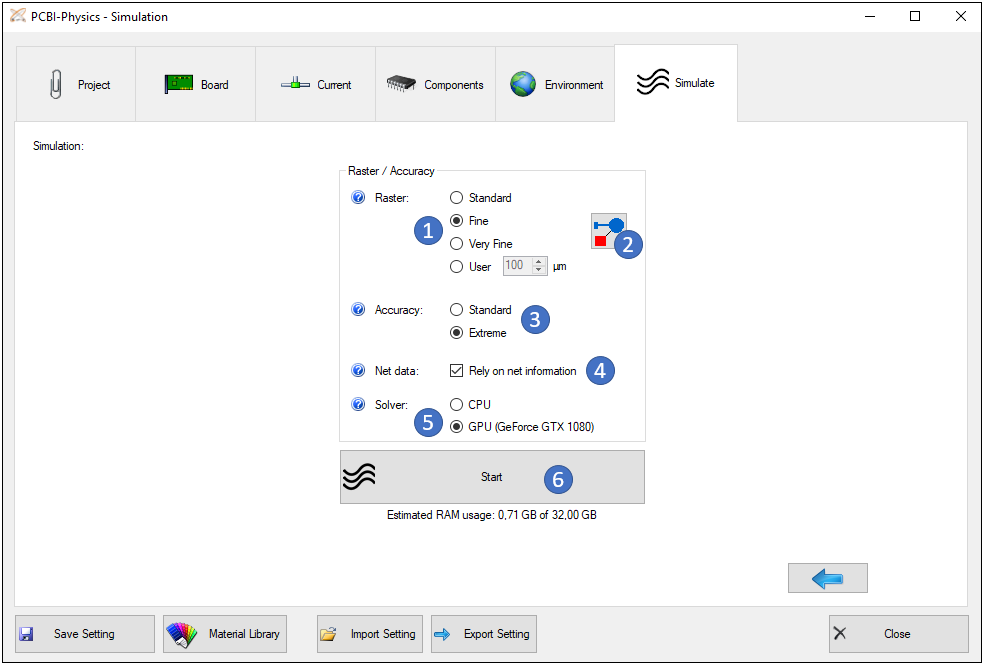


Raster (1):
The solution requires a large set of nodes inside the PCB volume. Define the spacing in x-y-directions. Standard means a spacing of 0.2 mm, fine 0.1 mm and very fine 0.075 mm.
Especially current-carrying traces (only those) need to have at least one, better two, nodes across width. For example the thinnest trace of interest is 0.2 mm wide, then choose at least a raster of 0.15 mm. better take 0.1 mm: The finer the raster, the more computational work. The vertical spacing is defined by the layer stack-up.
The button (2) helps to determine the right raster size by checking all distances between current carrying nets and their minimum trace widths. If nets are too close together or too thin for the chosen raster, this is reported.
Accuracy (3):
The solution of the fields is done with iterative algorithms, starting from zero and ending at a “converged” final state. The decision when to terminate the iterations is controlled by this flag. Standard is stopping the iterations at a relative residual of 0.1%, extreme stops at 0.01%.
Only experience can tell what to take best. Boards having a small number of nodes (either small by geometry or by coarse raster) could need extreme, because they tend to stop too early. Huge number of nodes could be done with standard. In fact, there is a case specific intimate relation between numerical work and how easy physics boundary conditions and geometry allow for an equilibrium.
Net data (4):
It is recommended to check rely on net information.
The electric solver is setting nodes only into the nets with Ampere values. This saves resources and allows a secure treatment.
Solver (5):
In most cases calculations run much faster on graphic cards (GPU) than they do on the universal processor (CPU) (from our experience up to 10x faster). But that depends strongly on hardware properties. GPU is only available for recent Nvidia graphic cards with at least CUDA 5.x support. The graphic card should also have at least 2 GB of RAM, better would be 4 or 8 GB.
Start (6):
Launches the simulations.